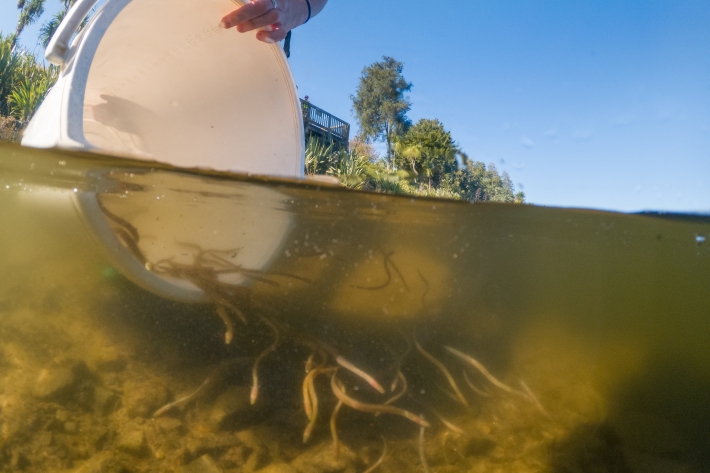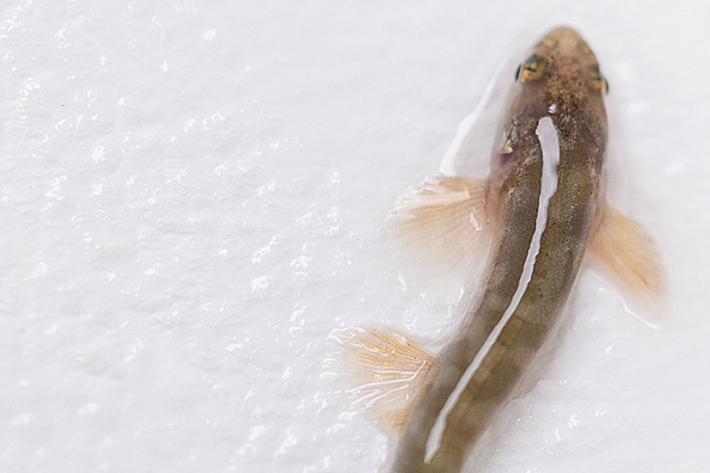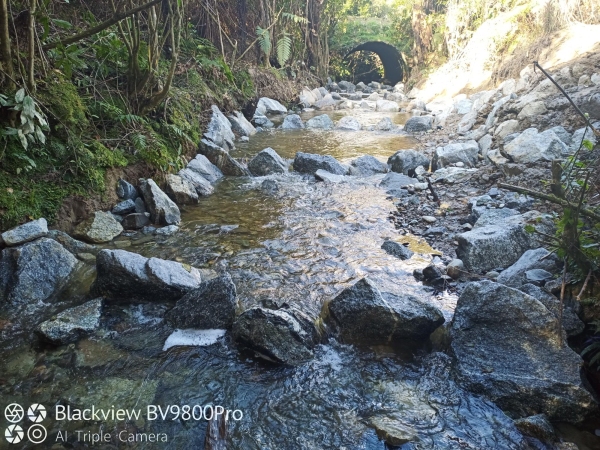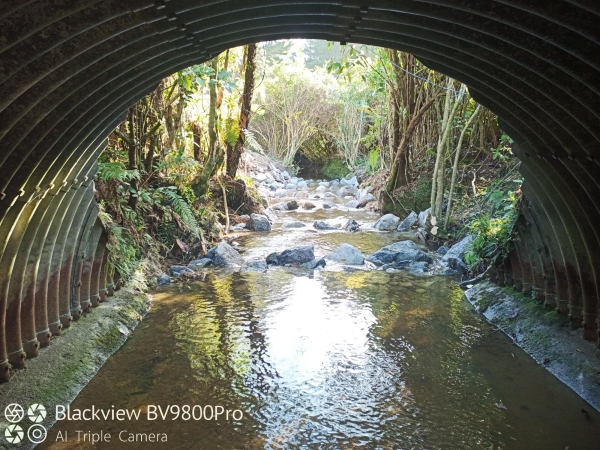Frequently Asked Questions
Why is fish passage important?
There are just over 50 freshwater fish species native to New Zealand. Three-quarters of these are classified as at risk or threatened with extinction.
Many of our iconic native fishes, such as eels (tuna) and whitebait, migrate between the sea and our rivers. As the small, finger-sized juveniles make their way upstream to reach the habitats they need to grow, feed and breed, they increasingly encounter man-made barriers such as dams, culverts and weirs.
Fragmentation of river systems is a key driver in their decline. If they can’t get past these obstacles, they are not able to access the essential habitats required to complete their life cycle.
Is there a fish passage issue in New Zealand?
New Zealand has some of the highest densities of barriers to fish passage in the world – on average individuals can encounter a barrier every 6.5 km on their journey upstream. Nearly half of New Zealand’s rivers and streams are already partially or fully inaccessible to migratory fish. NIWA research, tools and guides are supporting councils, kaitiaki, community groups, rural professionals and landowners as they endeavour to fix those structures so more rivers are accessible.
What native fish are obstructed by barriers in waterways?
All fish move around as they seek out food, refuge and places to breed. Barriers in waterways impede or block these movements, reducing the distribution and abundance of many of our fishes. Some species (e.g. eels, galaxiids, torrentfish, smelt, lamprey and bullies) also undertake longer migrations, spending time both at sea and in river habitats. These movements make these species particularly vulnerable to barriers such as dams, weirs, falls, tide gates, culverts, screens and high water velocities that hinder their movements.
Juvenile eels and some galaxiids (giant, banded, and shortjaw kōkopu and kōaro) are good climbers and can ascend near vertical wet rock faces and falls of up to 15 m high. Consequently, they are more able to bypass some barriers compared to species such as smelt, inanga and mullet that cannot climb.
What about pest fish and trout?
Providing fish passage is good for most native fish and freshwater species (including trout), but removing barriers can have an impact by introducing invasive species to a new area. Some important locations need barriers to help protect native species and ecosystems by keeping invasive fish (including trout) out.
What is good fish passage?
Effective fish passage connects all the habitats that are necessary for freshwater fish and other instream organisms like kākahi, shrimps and aquatic invertebrates, to complete their life cycles. Ensuring fish and other organisms can move within, over and through physical structures, as well as managing the water quality and flow conditions in a waterway that may impede passage, are essential for fish passage management. Continued research and the development of assessment tools and design guides is vital for these threatened freshwater taonga.
What regulations exist for the protection of fish passage?
NIWA research has informed development of the New Zealand Fish Passage Guidelines that in turn were used to inform new regulations in the National Policy Statement for Freshwater Management and the National Environmental Standards for Freshwater. These regulations mean any new structure that is put across a river or stream now needs to be designed to enable fish to get past. There are also requirements to provide and maintain fish passage in the Freshwater Fisheries Regulations (for more details see Fish passage authorisations: Apply for permits [DOC]) and in regional plans.
What about providing fish passage at existing structures?
All regions are required to develop Fish Passage Action Plans that set out actions to restore river connectivity. Improving and maintaining effective fish passage at existing structures will be an essential part of achieving goals to improve ecosystem health. The New Zealand Fish Passage Guidelines provide direction on how to remediate existing structures to provide effective fish passage.
What is NIWA doing to help improve fish passage?
NIWA is leading research to help us better understand the capabilities and requirements of different fish species and how we design effective fish passage solutions. We are also working with stakeholders and iwi partners to implement and test demonstration fishways, create decision-support tools, and develop guidelines to support evidence-based practice.
What tools and resources does NIWA have to support fish passage decision making and practice?
NIWA has created the Fish Passage Assessment Tool (FPAT), which can be used to collect information about instream structures and evaluate their risk to fish passage. These data are available in a webtool where you can see where structures exist and access information about them.
The Barrier Assessment and Reporting Tool (BART) has been created to help river managers and asset owners understand connectivity in different catchments, and prioritise barriers within catchments for remediation.
NIWA led development of the New Zealand Fish Passage Guidelines. First released in 2018 and updated in 2024, the guidelines provide the best available information on evidence-based approaches to providing effective fish passage at new and existing structures.
Monitoring is critical for understanding how well different fish passage solutions and fishways work. NIWA has created a Fish Passage Monitoring Manual to help people with designing effective monitoring programmes to evaluate fish passage.
What can I do to help improve fish passage?
First and foremost, make sure that any new or replacement instream structures are designed and maintained in a way that allows fish and other organisms to safely and easily move past. There is advice in the New Zealand Fish Passage Guidelines on how to do this. Secondly, where there are instream structures that are no longer required, look at removing them. Getting rid of barriers is the best way to restore river connectivity. If removal or replacement isn’t an option in the short term, then there are ways to restore fish passage at existing structures either by modifying them or bypassing them. Rock ramp fishways are a versatile and effective way of getting fish past vertical drops and can be used to help slow water down to make it passable for fish. Baffles can also be installed inside culverts to slow the water enough to allow fish to pass. Again, there is advice in the New Zealand Fish Passage Guidelines on the different ways available to help restore fish passage at existing structures.
What is a rock ramp fishway?
A rock ramp fishway is a rock structure that can be built to help fish overcome vertical drops, for example at the downstream end of culverts or below weirs. It effectively acts as a fish staircase that helps fish to get up and over a barrier.
What is a baffle?
A baffle is something that is attached to the wall or bed of a structure (usually culverts) to help slow down the water enough to help fish get through. There are lots of different types of baffles, but some work far better than others for New Zealand’s fishes.
Publications on Fish Passage:
- Franklin, P.A., Bašić, T., Davison, P.I., Dunkley, K., Ellis, J., Gangal, M., González-Ferreras, A.M., Gutmann Roberts, C., Hunt, G., Joyce, D., Klöcker, C.A., Mawer, R., Rittweg, T., Stoilova, V., Gutowsky, L.F.G. (2024) Aquatic connectivity: Challenges and opportunities in a changing climate. Journal of Fish Biology. DOI: 10.1111/jfb.15727
- Baker, C.F., Williams, P. Pyper, N. & Franklin, P.A. (2024) Rubber ramp and spat rope did not facilitate upstream passage of a galaxiid through a perched culvert. Marine & Freshwater Research. 75(3): MF23207. DOI: 10.1071/MF23207
- Crawford, R., Gee, E., Dupont, D., Hicks, B., Franklin, P.A. (2024) High water temperature significantly influences swimming performance of New Zealand migratory species. Conservation Physiology. DOI: 10.1093/conphys/coae047
- Franklin, P.A., Crawford, R., van Ravenhorst, W.B. & Baker, C.F. (2024) Impacts of marking methods on estimates of fish passage efficiency for a small-bodied fish. Marine & Freshwater Research. 75(2): MF23187. DOI: 10.1071/MF23187
- Thieme, M.L., Birnie-Gauvin, K., Cooke, S.J., Opperman, J.J., Franklin, P.A., Richter, H., Baumgartner, L.J., Ning, N., An, V.V., Brink, K., Sakala, M., O’Brian, G., Petersen, R. & Tongchai, P. (2023) Measures to safeguard and restore river connectivity. Environmental Reviews. DOI: 10.1139/er-2023-0019
- Crawford, R., Gee, E., Dupont-Valcy, D., Hicks, B. & Franklin, P. (2023) No difference between critical and sprint swimming speeds for two galaxiid species, Galaxias maculatus and Galaxias fasciatus. Journal of Fish Biology. 102: 1141-1148, DOI: 10.1111/jfb.15355
- Magaju, D., Montgomery, J., Franklin, P., Baker, C. & Friedrich, H. (2023) Machine learning based assessment of small-bodied fish tracking to evaluate spoiler baffle fish passage design. Journal of Environmental Management. 325: 116507. DOI: 10.1016/j.jenvman.2022.116507
- Franklin, P.A., Sykes, J., Robbins, J., Booker, D.J., Bowie, S., Gee, E. & Baker, C.F. (2022) Building a national fish passage barrier inventory and estimating river connectivity to support fish passage policy implementation in New Zealand. Ecological Informatics. DOI: 10.1016/j.ecoinf.2022.101831
- Franklin, P.A., Baker, C. & Reeve, K. (2021) A comparison of passage efficiency for native and exotic fish species over an artificial baffled ramp. Journal of Fish Biology. 99(6): 1928-1939. DOI: 10.1111/jfb.14899
- Magaju, D., Montgomery, J., Franklin, P.A., Baker, C. & Friedrich, H. (2021) Spoiler baffle patch design for improved upstream passage of small-bodied fish. Ecological Engineering. 169: 106316. DOI: 10.1016/j.ecoleng.2021.106316
Further reading:
-

Freshwater species - publications
These are some recent publications related to the freshwater species ecology and management programme. -

Removing barriers to ensure freshwater fish can complete their life cycle
Media release19 May 2022New Zealand has just over 50 native freshwater fish species. Of these, 85 % are endemic and 75 % are deemed to be at risk of decline or are threatened. -

How does a fish climb a ramp? Very, very cleverly…
Feature story18 January 2021New Zealand’s native fish are doing their best to climb up ramps in a NIWA laboratory so scientists can learn how to better help them navigate our tricky waterways.



